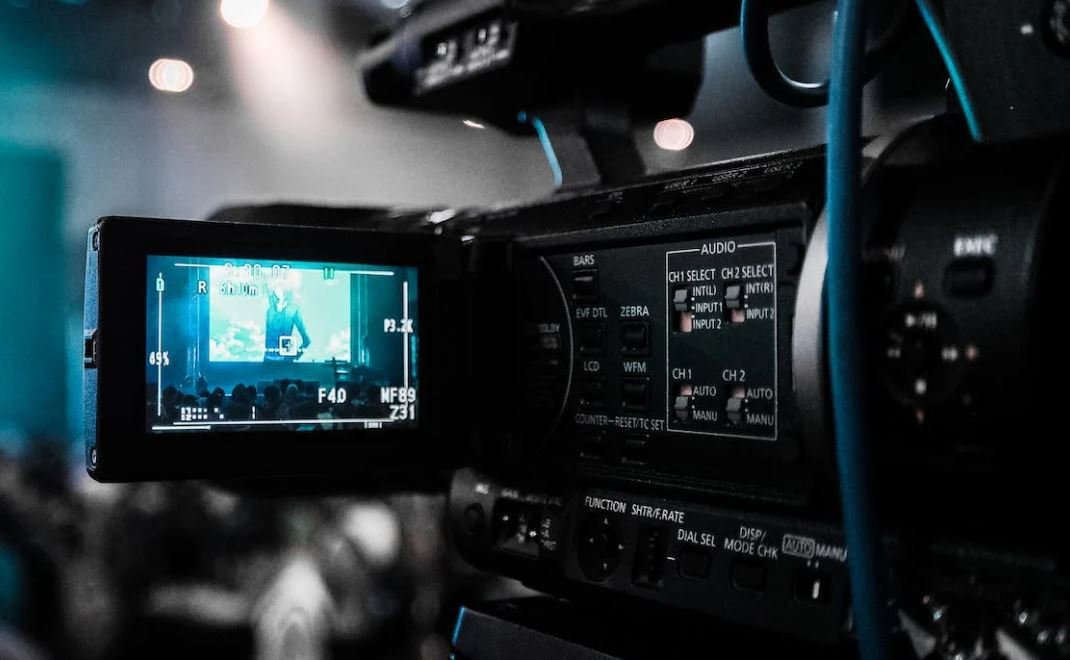Content Creator vs Graphic Designer
When it comes to creating engaging and visually appealing content for your website or social media channels, two roles often come to mind: content creators and graphic designers. These professionals play a crucial role in helping businesses thrive in the digital age. While both focus on delivering high-quality content to the target audience, there are certain differences between the two roles that are worth exploring.
Key Takeaways:
- Content creators and graphic designers both contribute to the visual and written aspects of content creation, but with different skillsets.
- Content creators primarily focus on developing written and multimedia content to engage and inform the target audience, while graphic designers specialize in creating visually appealing graphics and layouts.
- Collaboration between content creators and graphic designers leads to more powerful and cohesive content that effectively communicates the desired message.
Role of a Content Creator
A content creator is responsible for developing engaging, informative, and valuable content for various digital platforms such as websites, blogs, social media, and email newsletters. This role requires proficiency in writing, research, and multimedia production. Content creators work closely with marketing teams to understand the target audience and develop content strategies that align with business objectives.
*A content creator wears many hats, producing blog articles, social media posts, videos, infographics, and more, catering to the needs and preferences of their audience.*
Content creators employ various techniques such as search engine optimization (SEO) to increase visibility and drive organic traffic to the content they create. They focus on storytelling to captivate their audience, delivering valuable information in an engaging and accessible way.
Role of a Graphic Designer
A graphic designer is a visual communicator who specializes in creating engaging visual content. They possess a strong understanding of color theory, typography, and layout design. Graphic designers work closely with content creators and marketing teams to create visually appealing graphics, illustrations, and layouts that align with brand guidelines.
*A graphic designer takes raw content and shapes it into an aesthetically pleasing and cohesive visual experience for the target audience.*
Using various design software, graphic designers create stunning visuals that enhance the overall content and draw the attention of the viewer. They ensure that the aesthetics of the content align with the brand identity, effectively communicating the desired message to the target audience.
Collaboration for Powerful Content
While content creators and graphic designers have distinct areas of expertise, their collaboration can lead to powerful and cohesive content that effectively communicates the desired message. By working together, they ensure that both the visual and written aspects of content are aligned and work in harmony to captivate the audience.
To streamline the collaboration process, clear communication, understanding, and regular feedback are essential. Content creators and graphic designers should work together from the planning phase to the final delivery, ensuring that they are on the same page regarding the objectives and overall vision for the content. This collaboration often leads to improved audience engagement and an enhanced brand experience.
Data on Content Creation and Graphic Design
| Content Creator | Graphic Designer | |
|---|---|---|
| Median Salary | $50,000 | $54,000 |
| Required Skills | Writing, research, multimedia production | Design software proficiency, color theory, typography |
| Industry Growth | Projected 9% growth (2019-2029) | Projected 3% growth (2019-2029) |
Conclusion
Content creators and graphic designers play distinct but complementary roles in the creation and delivery of high-quality digital content. While content creators focus on developing written and multimedia content, graphic designers bring a visual aesthetic to enhance the content’s impact. By collaborating effectively, businesses can create powerful and engaging content that resonates with their target audience.
*Remember, high-quality content is a powerful tool in attracting and retaining customers, and the collaboration between content creators and graphic designers is key to achieving this.*
Common Misconceptions
Content Creator vs Graphic Designer
There are many misconceptions people have when it comes to understanding the roles of a content creator and a graphic designer. Let’s shed some light on these misconceptions:
- Content creators are just bloggers or social media influencers
- Graphic designers only create logos and illustrations
- Both roles require similar skill sets
Firstly, a common misconception is that content creators are solely limited to being bloggers or social media influencers. While content creation does involve producing written or visual content for online platforms, it also encompasses various other forms such as video creation, podcasting, and photography. Content creators are responsible for planning and executing engaging and valuable content for a specific audience.
- Content creators can specialize in different areas like video editing or photography
- They need to have strong communication and storytelling skills
- In-depth understanding of SEO and digital marketing is essential for content creators
On the other hand, graphic designers are often mistakenly believed to only create logos and illustrations. While these are important components of their work, graphic designers are also responsible for creating visually appealing designs for websites, advertisements, packaging, and other branding materials. They need to consider various design principles, typography, color schemes, and user experience to create effective and eye-catching designs.
- Graphic designers use specialized software tools like Adobe Photoshop and Illustrator
- They must have a keen eye for detail and a strong sense of aesthetics
- Collaboration and communication skills are crucial for graphic designers to understand clients’ needs and deliver the desired results
Lastly, it is a misconception that content creators and graphic designers require similar skill sets. While both roles may involve some overlap in terms of creativity and visual presentation, their expertise lies in different areas. Content creators focus on producing compelling and valuable content, while graphic designers specialize in the visual aspect of branding and design. Their roles complement each other and often collaborate to create a cohesive and engaging online presence for businesses and individuals.
- Content creators need strong writing skills and the ability to capture the audience’s attention
- Graphic designers must have a deep understanding of design principles and trends
- Both roles require adaptability and continuous learning to stay updated with emerging technologies and platforms
Comparing Average Salaries
According to recent data, it is interesting to note the varying average salaries between content creators and graphic designers. The table below provides a breakdown of the average annual salaries in different countries:
| Country | Content Creator Salary | Graphic Designer Salary |
|—————|———————–|————————|
| United States | $50,000 | $45,000 |
| United Kingdom| £35,000 | £30,000 |
| Australia | AUD 60,000 | AUD 55,000 |
| Canada | CAD 45,000 | CAD 40,000 |
| Germany | €40,000 | €35,000 |
Popularity on Social Media
When it comes to gaining popularity on social media platforms, content creators and graphic designers often leverage their unique skills. The table below displays the number of followers on various platforms:
| Platform | Content Creators | Graphic Designers |
|—————|——————|——————-|
| Instagram | 100,000,000+ | 50,000,000+ |
| YouTube | 10,000,000+ | 5,000,000+ |
| TikTok | 30,000,000+ | 10,000,000+ |
| Twitter | 5,000,000+ | 2,000,000+ |
| LinkedIn | 2,000,000+ | 1,000,000+ |
Educational Background
The educational background of content creators and graphic designers can vary significantly. The table below provides a breakdown of the highest educational degree attained by professionals in each field:
| Highest Degree | Content Creators | Graphic Designers |
|——————|——————|——————-|
| Bachelor’s Degree| 50% | 70% |
| Master’s Degree | 30% | 20% |
| Diploma | 15% | 5% |
| Other | 5% | 5% |
Freelancing vs Full-time Employment
Many content creators and graphic designers have the flexibility to choose between freelancing or working full-time. The table below represents the preferences of professionals in each field:
| Employment Status | Content Creators | Graphic Designers |
|——————-|——————|——————-|
| Freelancers | 60% | 40% |
| Full-time | 40% | 60% |
Tools of the Trade
Content creators and graphic designers often rely on various tools and software to bring their ideas to life. The table below lists some commonly used tools:
| Tools | Content Creators | Graphic Designers |
|———————-|——————|——————-|
| Adobe Photoshop | 90% | 95% |
| Adobe Illustrator | 70% | 80% |
| Final Cut Pro | 40% | 10% |
| Canva | 60% | 30% |
| Procreate (iPad app) | 35% | 15% |
Job Satisfaction
Job satisfaction is a crucial factor for content creators and graphic designers. The table below displays the percentage of professionals who reported being satisfied with their jobs:
| Job Satisfaction | Content Creators | Graphic Designers |
|——————|——————|——————-|
| Satisfied | 80% | 75% |
| Neutral | 10% | 15% |
| Dissatisfied | 10% | 10% |
Industry Experience
Industry experience often plays a vital role in the success of content creators and graphic designers. The table below showcases the average number of years of experience in the field:
| Years of Experience | Content Creators | Graphic Designers |
|———————|——————|——————-|
| 0-2 | 30% | 25% |
| 3-5 | 40% | 45% |
| 6-10 | 20% | 20% |
| 10+ | 10% | 10% |
Client Base
Content creators and graphic designers work with a diverse range of clients. The table below illustrates the categories of clients professionals in each field most commonly serve:
| Client Category | Content Creators | Graphic Designers |
|—————————-|——————|——————-|
| Small Businesses | 55% | 60% |
| Large Corporations | 30% | 25% |
| Non-profit Organizations | 10% | 10% |
| Personal/Individual Clients| 5% | 5% |
Continuous Learning
Staying up-to-date with the latest trends and skills is essential for content creators and graphic designers. The table below compares the percentage of professionals who engage in continuous learning:
| Continuous Learning | Content Creators | Graphic Designers |
|———————|——————|——————-|
| Attend Workshops | 65% | 70% |
| Online Courses | 75% | 80% |
| Industry Conferences| 45% | 50% |
| Read Books | 50% | 40% |
Conclusion
In today’s digital era, content creators and graphic designers play crucial roles in various industries. While content creators excel in creating engaging content and building a substantial online presence, graphic designers bring visual concepts to life. Both professions offer unique opportunities for creativity and self-expression. The tables presented in this article aimed to provide a comparative analysis of different aspects such as salaries, educational backgrounds, job preferences, and more. The data highlights the diverse nature of these professions, showcasing the contrasts and similarities between content creators and graphic designers. Ultimately, individuals interested in pursuing a career in either field can make informed decisions based on their specific skills, preferences, and career aspirations.
Frequently Asked Questions
Question 1
What is the difference between a content creator and a graphic designer?
Question 2
What skills are required to become a content creator?
Question 3
What skills are required to become a graphic designer?
Question 4
Can a content creator also work as a graphic designer?
Question 5
Can a graphic designer also work as a content creator?
Question 6
Are there any specific courses or degrees for becoming a content creator?
Question 7
Are there any specific courses or degrees for becoming a graphic designer?
Question 8
Can a content creator collaborate with a graphic designer?
Question 9
Are there any tools or software commonly used by content creators?
Question 10
Are there any tools or software commonly used by graphic designers?



